With more than 50% of global digital ad spend concentrated on Google and Meta, the Google Ads vs Facebook Ads debate is far from over. Both platforms provide businesses with powerful ways to connect with their audiences, but they do so through fundamentally different channels.
Google helps businesses show up when customers are ready to buy, while Facebook helps brands get noticed long before that moment happens. The real opportunity lies in understanding how these two giants complement each other, and how each can be used to meet specific goals.
What is Google Ads?
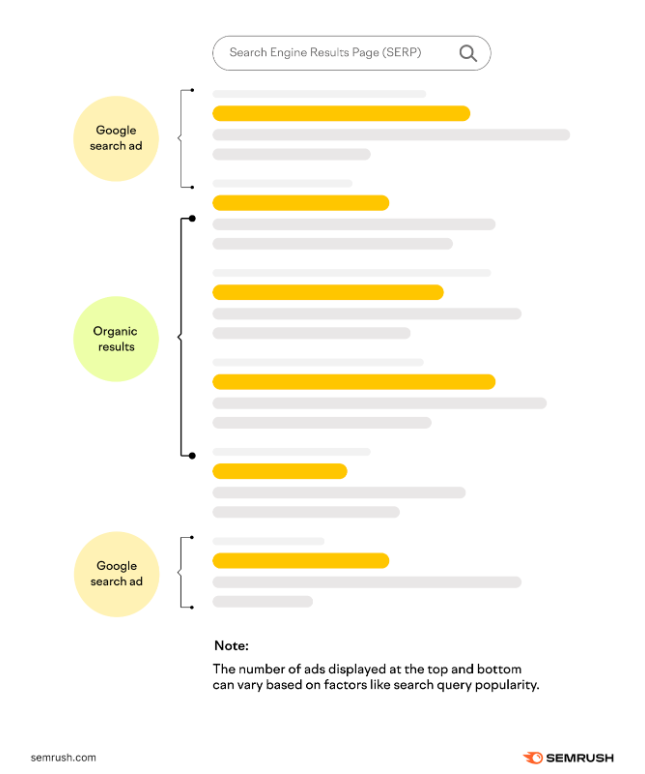
Image captured from Semrush
Google Ads is Google’s advertising platform that enables businesses to display ads across its extensive ecosystem. 38.6% of the total US digital ad spend is on Google—and for good reason. It works primarily through an auction-based pay-per-click (PPC) model, where advertisers bid on the keywords relevant to their products and services.
Google Ads supports multiple campaign types to cover different stages of the buyer journey, including:
- Search campaigns: text ads shown in search results for user queries that match targeted keywords.
- Shopping campaigns: product-based ads for e-commerce that appear in search results and the Shopping tab.
- Display campaigns: visual ads served on sites within the Google Display Network.
- YouTube campaigns: video ads shown on YouTube before, during, or alongside content.
- Performance Max campaigns: goal-based campaigns that optimize across multiple channels to meet specified conversion goals.
These formats enable advertisers to reach users at various stages of intent, from discovery to direct response.
What are Facebook Ads?
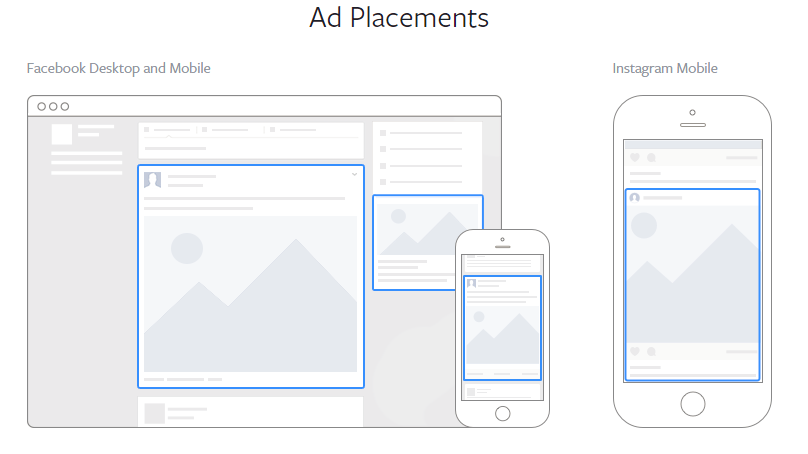
Image captured from Metric Theory
Facebook Ads (under the Meta Ads umbrella) enables businesses to reach audiences across Facebook, Instagram, Messenger, and the Audience Network. Unlike Google, Facebook doesn’t rely on search intent—it focuses on audience targeting based on interests, behaviors, demographics, and online activity.
Popular Facebook ad placements include:
- Facebook Feed: appears in the main Facebook feed as users scroll, delivering broad reach with a mix of images, videos, and carousels.
- Instagram Feed: a visually-driven placement in the Instagram app optimized for high-quality imagery or video.
- Facebook Marketplace: shopping-focused placement where users browse product listings.
- Facebook Video Feeds: video-centric placements within Facebook’s video surfaces, including Reels and stories.
- Facebook Right Column: desktop-only, lower-visibility area used mainly for supplementary retargeting or niche tests
- Audience Network: extends reach beyond Meta properties to partner apps and sites.
- Facebook Messenger: ads appear within the Messenger app and sponsored messages.
With these formats, Facebook’s ecosystem becomes ideal for storytelling and visual engagement, potentially helping brands build awareness and nurture audiences over time.
Comparing Google Ads vs. Facebook Ads
While both platforms dominate the digital advertising space, they operate on fundamentally different models. Here’s a quick overview of how they differ.
- Pricing Costs
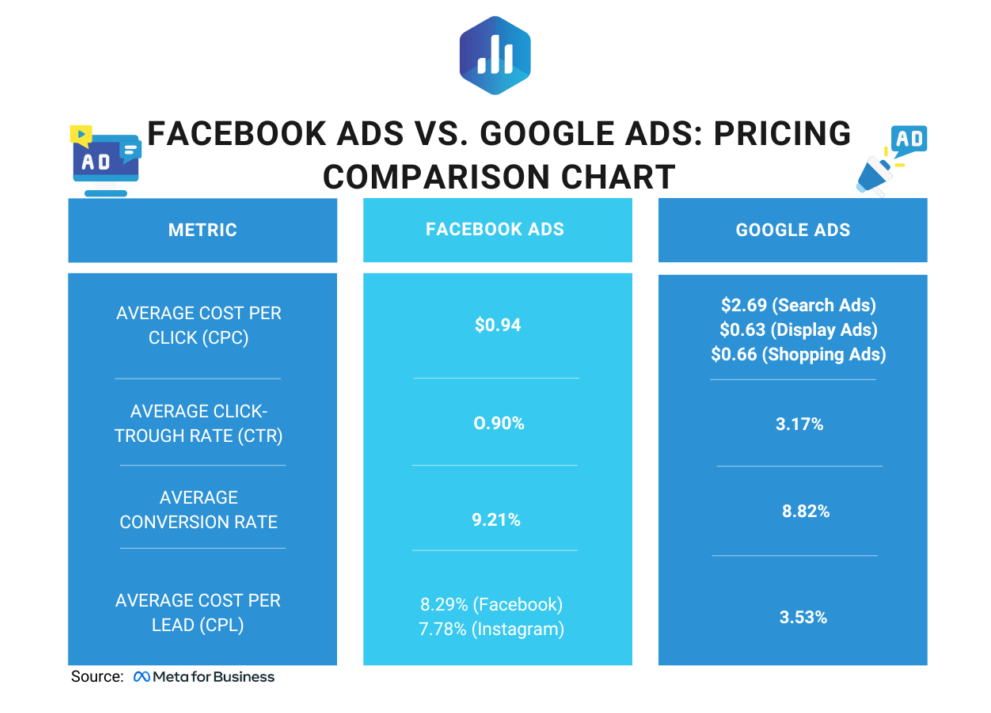
Image captured from Databox
Costs can vary widely between the two platforms depending on the industry, competition, and target audience.
Generally, Google Ads has a higher average cost per click (CPC) because it targets users who are actively searching for something. In high-demand industries like law, finance, and real estate, CPCs can reach double digits. However, conversion rates tend to be higher because of strong purchase intent.
On the other hand, Facebook Ads usually have lower CPCs and CPMs (cost per thousand impressions). It’s more budget-friendly for reach and brand awareness, although it may take longer to drive direct conversions, as most users aren’t in buying mode.
- Audience Intent
Google Ads captures active intent. When users search for specific solutions, products, or services, they are doing so with the intent to buy them.
When a search result aligns with their needs and they experience a seamless landing page, users are highly likely to convert from browsers to buyers. In 2025, the average conversion rate for Google Ads across all industries is 7.52%.
On the other hand, conversion rates for Facebook can vary more by industry and campaign objective. Facebook users typically use the app for leisure instead of shopping, so it can be less effective at converting leads.
- Targeting Options
With Google Ads, you can select keywords and match types to ensure your ads appear when users search for relevant terms, supplemented by in-market and custom intent signals. Facebook Ads, however, are more personal.
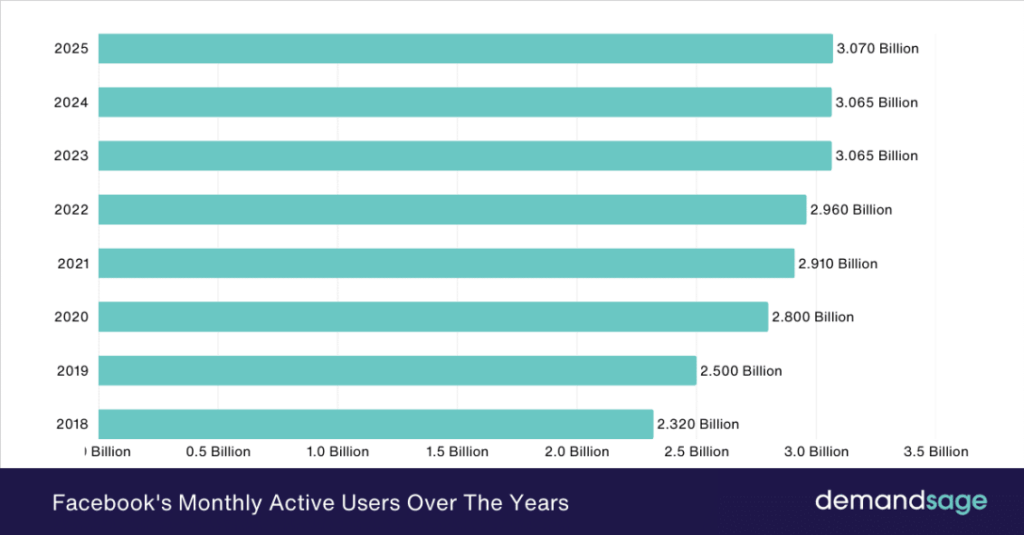
Image captured from DemandSage
You don’t have to fear your ads getting lost among Facebook’s 3.07 billion monthly users. As of 2025, the average Facebook Ad conversion rate across all industries is around 9.2%. Like Google, Facebook Ads allow you to target by demographics, but its added flair comes from its large list of interests and behaviors you can select as your preferred audience.
Choosing Between Google Ads vs. Facebook Ads
Both ad platforms definitely provide strong advantages. However, using them depends on your business objectives, audience behavior, and sales cycle. Below are some recommendations to help you decide if you should use Google Ads or Facebook Ads.
- When to Use Google Ads
Use Google Ads when you want to capture existing demand. If people are already searching for your product, service, or problem you solve, Google is where you meet them.
It’s perfect for high-intent searches, product comparisons, and time-sensitive offers like bookings or purchases. You can also use YouTube and Display campaigns to nurture interest before conversion, while Shopping and Performance Max campaigns help you scale visibility efficiently.
- When to Use Facebook Ads
Use Facebook Ads when you want to create demand. It’s ideal for building awareness, reaching new audiences, and telling your brand story through visuals and creative formats.
Facebook’s advanced targeting lets you pinpoint audiences who are likely to be interested, even before they realize they need your product. It’s especially effective for top-of-funnel campaigns, lead generation, and mobile app installs. You can establish a loyal audience that you can later convert by remarketing and employing nurture campaigns.
Using Google Ads and Facebook Ads Together
Here’s where the magic really happens: you don’t have to choose. The best marketers use both platforms together for a full-funnel strategy. How?
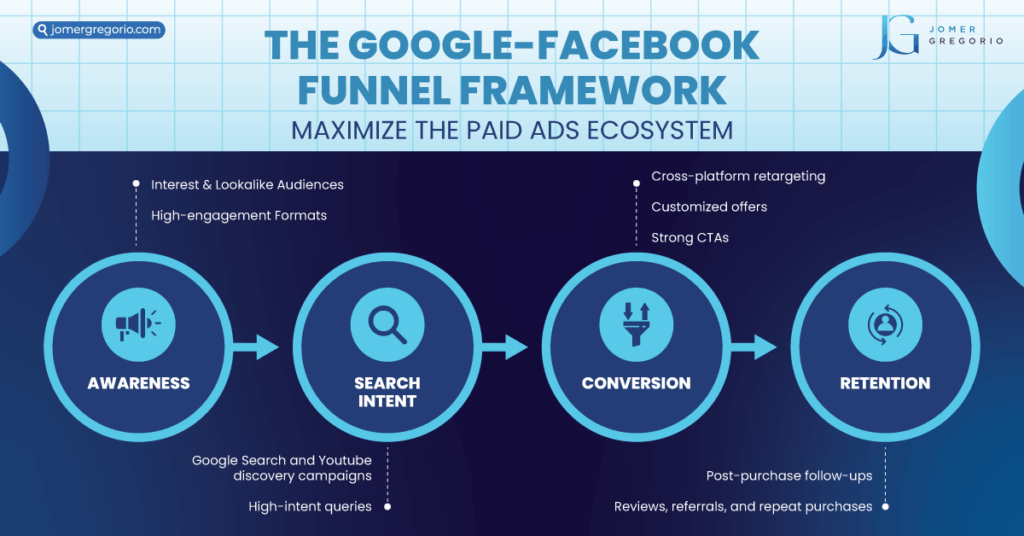
- Build Brand Awareness
At this stage, the goal isn’t to sell—it’s to be seen. Facebook Ads are your best allies here.
You can run campaigns that introduce your brand to new audiences through broad interest or lookalike targeting. Keep your creatives short, engaging, and scroll-stopping—think Reels, short videos, and carousels that tell a quick story. Think of it like planting the seed.
- Leverage Search Intent
Once you’ve caught attention, Google comes into play. People start searching for what they’ve seen, comparing products, and looking for answers.
In this stage, Search and YouTube Discovery campaigns shine. You’re meeting users at the exact moment they’re curious or ready to learn more, so your messaging needs to reinforce trust and relevance.
- Reinforce Conversion
Now it’s about precision—retarget audiences who’ve already interacted with your brand, including site visitors, cart abandoners, and video viewers.
You can tailor messaging based on behavior: show urgency to those who have abandoned a cart, and provide reassurance to those who are still considering. Whether it’s through Google Display remarketing or Facebook retargeting, your call-to-action should feel personal, not pushy.
- Advocate for Retention
As the saying goes, the end is only the beginning. The same can be said for sales—it’s not the finish line but the start of a new campaign cycle.
You need to keep your brand in front of existing customers through innovative post-purchase strategies. Consider using social retargeting and email follow-ups to encourage reviews, referrals, or repeat purchases. Loyal customers are, after all, your best marketers, and nurturing them pays off tenfold in long-term growth and credibility.
Make Smarter Advertising Strategies
Instead of asking which platform is better, the smartest marketers are asking how each one fits into their growth strategy. Success today means testing, analysing, and refining across multiple touchpoints. The brands that thrive are those that treat paid advertising as an evolving partnership between data, creativity, and intent.
If you’re ready to move beyond guesswork and build campaigns that convert with purpose, now’s the time to refine your paid strategy with me. As an SEO specialist, I can work with you to identify where your audience spends time, what motivates them, and which channels will drive measurable growth.
Contact me today to start building a performance-driven campaign that actually scales.
References:
https://databox.com/facebook-ads-or-google-ads
https://metrictheory.com/blog/finding-the-best-facebook-ad-placements-for-your-goals/
https://www.semrush.com/blog/google-advertising
https://www.demandsage.com/facebook-statistics/
https://www.wordstream.com/blog/ws/2018/07/19/advertising-statistics
